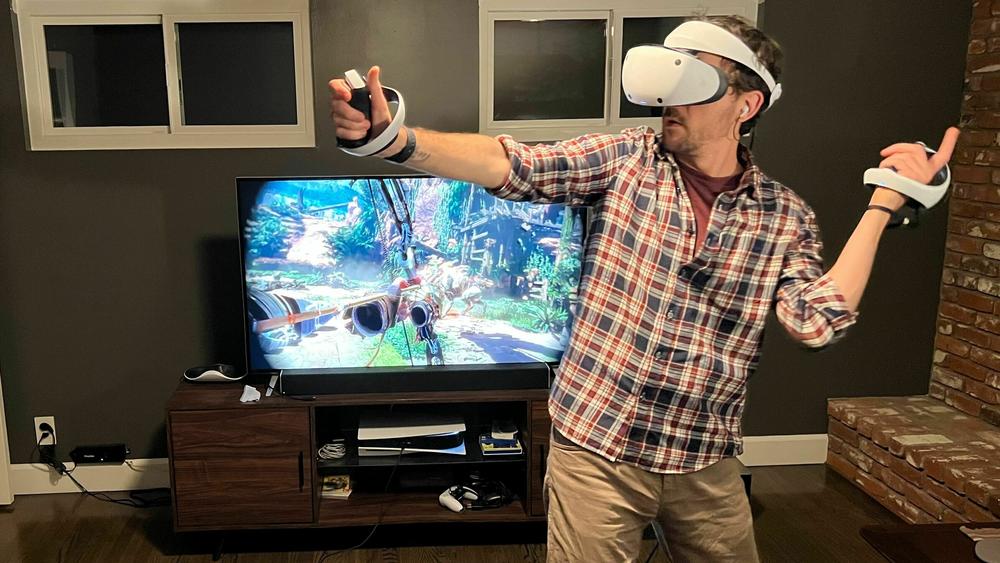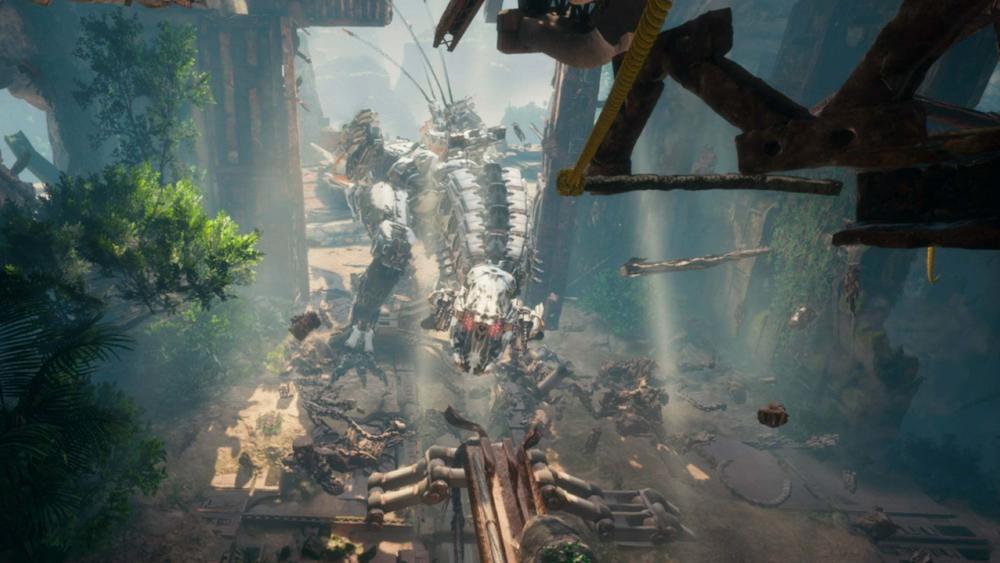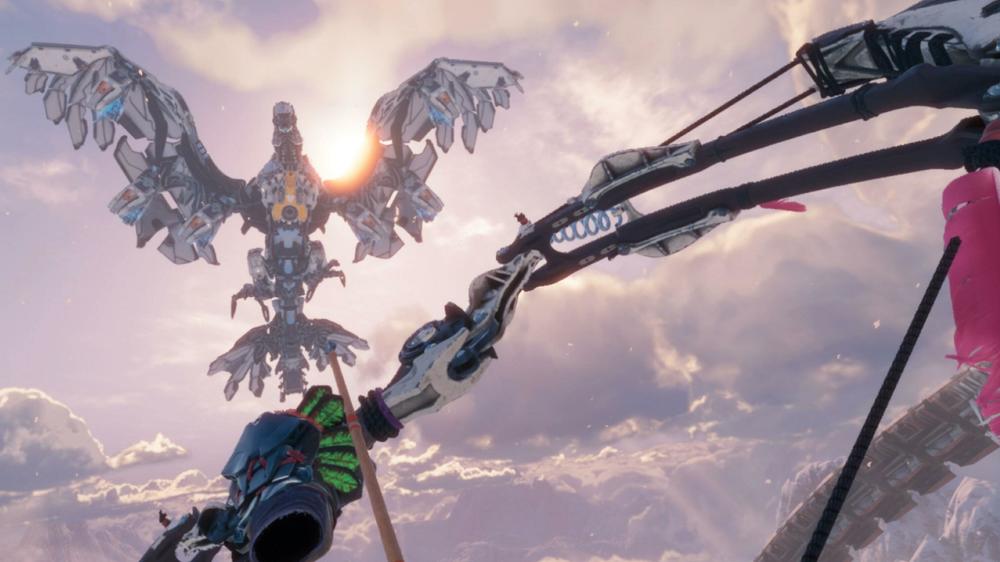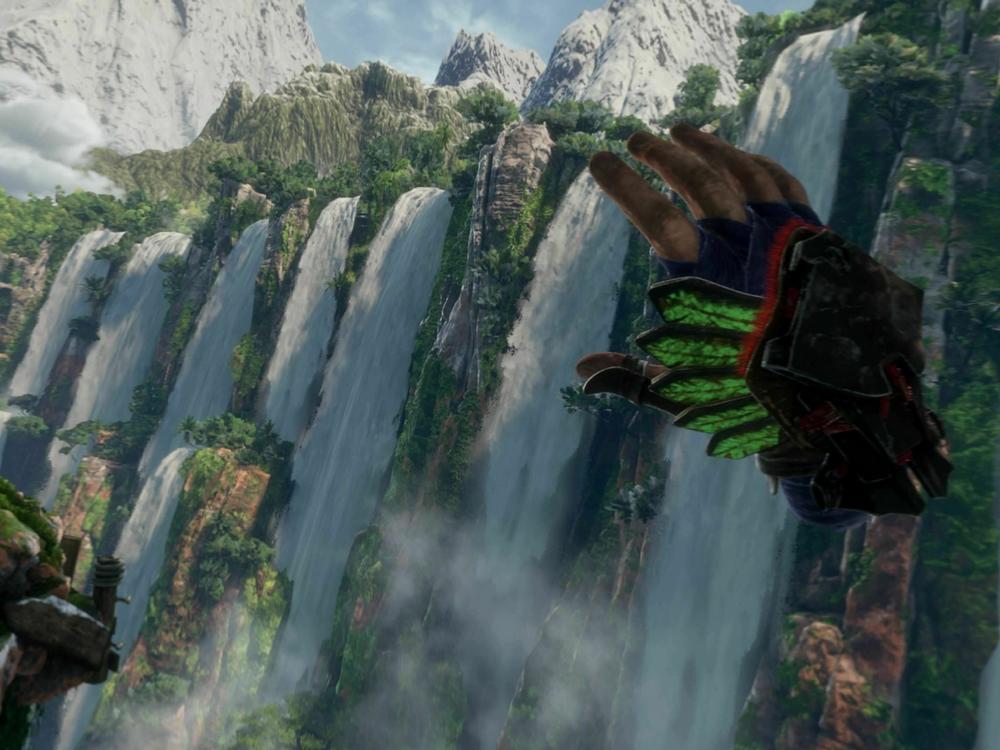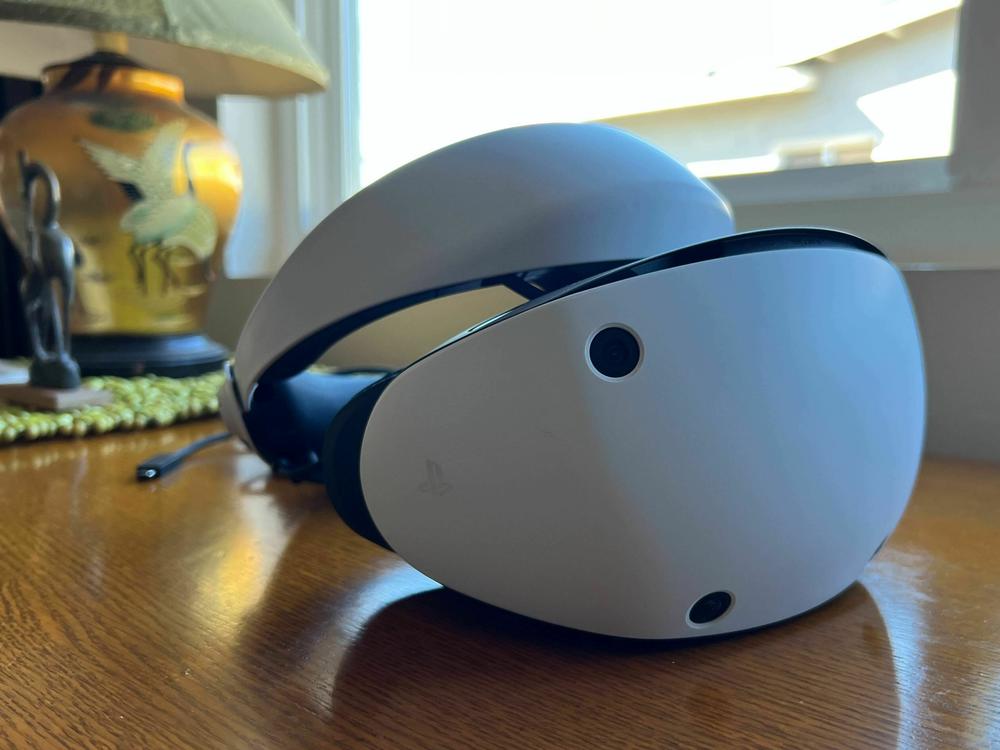Section Branding
Header Content
'PlayStation VR2' Review: A strong foundation with a questionable future
Primary Content
Last Friday afternoon, I decided to climb a mountain. Despite having no training and a questionable level of fitness, I felt pretty good about my chances. Finding handholds, I hoisted myself up the rocky cliff face, taking moments to appreciate the gorgeous jungled valley below me.
Finally, I pulled myself up onto a large dirt clearing. It was eerily quiet with no signs of life.
Suddenly, a metallic roar cracked open the silence.
Swinging my head in its direction, I watched as a 30-foot-tall robotic T-Rex stomped forward, huge hydraulic-powered legs whirling and hissing as it stared me down and sized me up.
Out of instinct, I reached behind my back to grab my compound bow and explosive-tipped arrows, swung them up and over my head in a practiced arc...
And slammed my fist into my TV.
Welcome to the promises and pitfalls of virtual reality.
Cutting-edge tech
Horizon Call of the Mountain is PlayStation's flagship VR title, launching Wednesday alongside its new VR headset, the PS VR2. While players can easily spend dozens of hours harvesting machine parts across gigantic open worlds in Horizon's core games, Call of the Mountain is a contained, almost on-rails experience of maybe 6-7 hours meant to showcase the new headset.
Purely from a resolution perspective, Call of the Mountain sets a new standard on the PS VR2. With my eyes positioned just centimeters from the VR's new OLED screens, I could see individual strands of moss between my virtual fingers as I climbed the mountain. When fighting a Thunderjaw (the T-Rex robot), every part of its gleaming armor, laser cannons and radar array is realized in sharp detail. Dark caves cast inky black shadows while the forest blooms in punchy greens, reds and yellows. These are easily the best screens I've seen in a VR headset.
PS VR2 also sports an array of tricks to make its VR experience feel better. An internal IR camera tracks the user's eyes, so navigating Call of the Mountain's menus is as easy as looking from one icon to the next. That eye tracking also means the headset saves on graphical power, only fully rendering the area of the screen when being looked at. Haptics are built not just into the two controllers but the headset itself, so when a Stormbird swoops down overhead, your face rumbles.
Gameplay, Sameplay
Call of the Mountain's gameplay is less appealing. While satisfyingly tactile, the climbing that makes up the majority of the game lacks the challenge of other simulators like Crytek's The Climb 2. Firing your bow feels great and the levels are littered with targets, but combat boils down Horizon's deep mechanics to:
- fire an arrow, then strafe
- fire another arrow or two, then strafe
It may not be fair to label Call of the Mountain a "tech demo," but I liken it to a splashy amusement park attraction I'm happy to have only ridden once.
A tethered ride
Just like with Sony's first VR headset that debuted in 2016, the PS VR2 is a tethered experience, requiring a PlayStation 5 to power it. This is both one of its greatest strengths and weaknesses.
There's no way a game like Call of the Mountain could run on the Quest 2, Meta's successful portable VR platform. With the power of the PS5, PS VR2 can run games previously only available to more expensive PC-based setups.
On the flipside, being tethered sucks.
I hit my TV at least three times while playing Call of the Mountain and I'm surprised it still works. I found myself regularly having to pause the game to pull the cable away from my feet, worried I'd yank the PS5 from the media center. And of course, my wife couldn't use the TV or even really relax in the same room lest she risk getting sideswiped while I battled dinobots.
High-tech isn't enough
Here's the thing: I like the PS VR2. It's a breeze to set up and comfortable even after hours of gaming. Unlike PC VR, the games available to me just worked — no tinkering or troubleshooting needed. The headset delivers gorgeous imagery and on top of all of that, it easily accommodates bespectacled people like myself.
But none of that warrants early adoption when there's no guarantee that Sony can deliver on games. Of the launch titles announced, only Horizon Call of the Mountain is a truly new, made-for-PS VR2 experience. PS5 titles Resident Evil Village and Grand Turismo 7 are getting VR updates, but every other game has been ported from older platforms. While Sony says there are 100+ games in the works for PS VR2, it's safe to assume most of those will be ports, too.
If you're new to VR, your money may be better spent on either a Meta Quest 2 or a Quest 3 due later this year. Not only are they less expensive and offer more games, the flexibility of wireless VR cannot be understated.
If you're a VR veteran, odds are you've already played many of its launch titles (Beat Saber, Moss 1 & 2, Star Wars Tales from Galaxy's Edge), and while very pretty, Horizon Call of the Mountain doesn't distinguish itself from the games that inspired it.
Hopefully, PS5's more powerful hardware will attract developers to bring their previously PC-only titles over to PS VR2 (come on Valve, release Half-Life: Alyx), but it's hard to imagine PS VR2 selling so well as to inspire third-party publishers to fund new, immersive VR games that cost tens of millions of dollars to create.
Unless Sony plans to throw a lot of money at VR for years to come, I worry their "Next Generation of Virtual Reality Gaming" is going to look a lot like the one we're stuck in now. That is, a niche corner of gaming mostly populated by amusement park-like experiences that don't leave a lasting impression.
Copyright 2023 NPR. To see more, visit https://www.npr.org.
Correction
An earlier version of this review misstated the name of Half-Life: Alyx as Half Life: Alex.
Bottom Content

